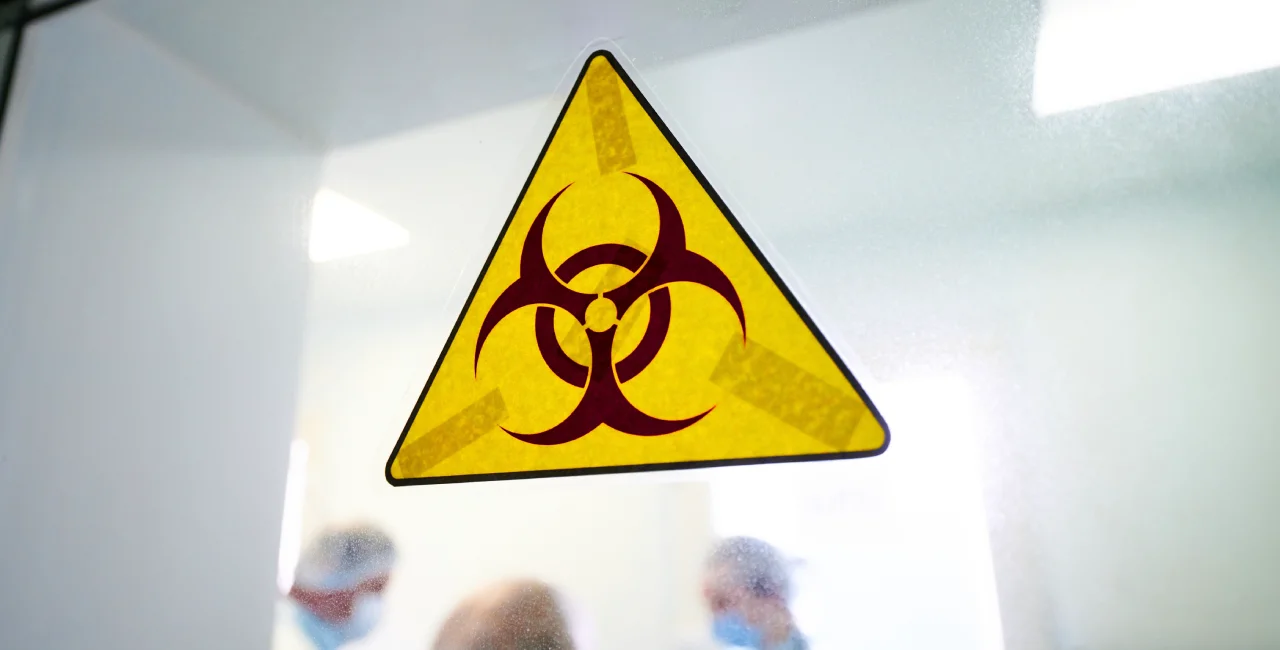May 18 update: A suspected case of Ebola at Prague’s Bulovka Hospital was ruled out late Friday, Health Minister Vlastimil Válek has confirmed. Tests by Berlin’s Robert Koch Institute found no evidence of Ebola or other hemorrhagic fevers. A total of 26 contacts were placed in precautionary quarantine.
An American man displaying symptoms consistent with Ebola was transported from Tábor in South Bohemia to Prague’s Bulovka Hospital on Friday evening, prompting a full-scale emergency response from medical and emergency personnel.
PARTNER ARTICLE
According to hospital officials, the patient remains in isolation, and results from laboratory tests are expected Saturday morning. Authorities are not confirming the diagnosis, but sources suggest the case involves suspected viral hemorrhagic fever, potentially Ebola or Marburg virus.
The patient, who had reportedly recently travelled to Africa, arrived at a Tábor hospital on his own displaying serious symptoms. He was moved under strict biohazard protocols to Bulovka, the only civilian facility in Czechia equipped to handle highly infectious diseases.
Emergency measures taken during transfer
Healthcare workers and firefighters in Tábor wore protective hazmat suits as they assisted with the patient’s relocation. According to South Bohemian fire officials, the man was placed in a sealed transport capsule and thoroughly disinfected along with anyone who came into contact with him during the operation.
Once transferred to Prague, he was admitted to Bulovka Hospital’s Infectious Diseases Clinic and placed in a biobox — a hermetically sealed isolation unit designed for treating patients with high-risk contagious illnesses.
Hospital spokesperson Eva Stolejda Libigerová confirmed the patient’s arrival but declined to provide further information until test results become available. The man, born in 1984, is reportedly a U.S. citizen who had recently been in the Democratic Republic of the Congo, where Ebola outbreaks have previously occurred.
Prague paramedics confirmed they had applied the “strictest possible precautions” during their involvement in the transfer, working in coordination with South Bohemian medical teams.
Ebola history and health risks
Ebola virus disease is a severe and often fatal illness with a mortality rate ranging from 25 to 90 percent. It is transmitted through direct contact with infected bodily fluids or contaminated surfaces. Symptoms include fever, vomiting, diarrhea, muscle pain, and in some cases, internal and external bleeding.
The virus was first identified in 1976 near the Ebola River in what is now the Democratic Republic of the Congo. The disease has caused several major outbreaks in Africa, most notably in West Africa between 2014 and 2016, which led to over 11,000 deaths.
Though vaccines for Ebola have been developed in recent years, they are not widely deployed outside of endemic regions.
Czech health officials emphasize that the country’s infrastructure is prepared to respond to such incidents, and that no members of the public are believed to be at risk at this stage. Bulovka has previously conducted drills simulating the reception of highly infectious patients, but this appears to be the first time a real case of this nature has reached the facility.
Authorities are expected to release additional information following the test results, which are anticipated by midday Saturday. In the meantime, the patient remains under strict medical supervision, and decontamination procedures have been implemented in both Tábor and Prague.












 Reading time: 2 minutes
Reading time: 2 minutes 



























